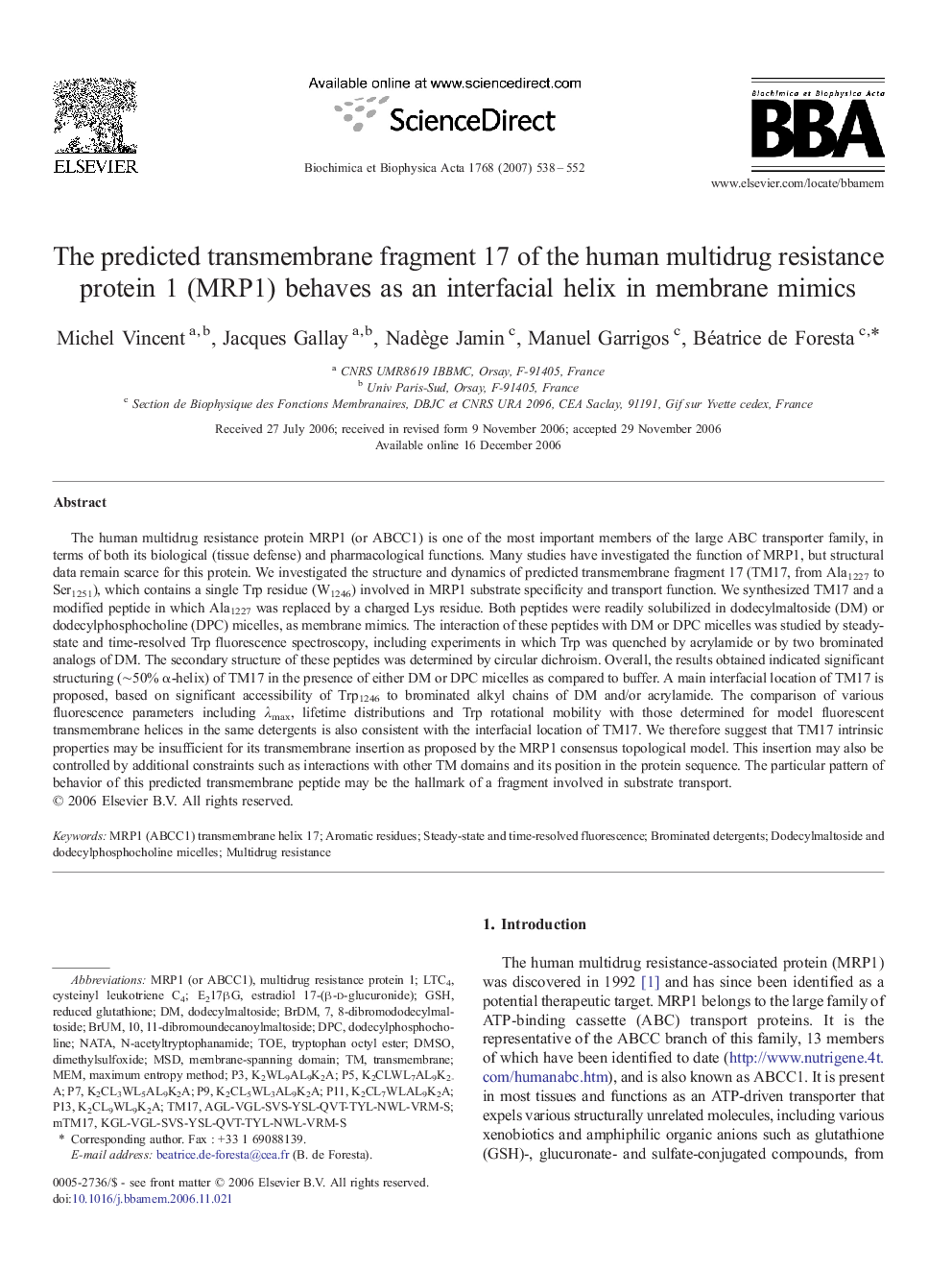| کد مقاله | کد نشریه | سال انتشار | مقاله انگلیسی | نسخه تمام متن |
|---|---|---|---|---|
| 1945853 | 1053278 | 2007 | 15 صفحه PDF | دانلود رایگان |

The human multidrug resistance protein MRP1 (or ABCC1) is one of the most important members of the large ABC transporter family, in terms of both its biological (tissue defense) and pharmacological functions. Many studies have investigated the function of MRP1, but structural data remain scarce for this protein. We investigated the structure and dynamics of predicted transmembrane fragment 17 (TM17, from Ala1227 to Ser1251), which contains a single Trp residue (W1246) involved in MRP1 substrate specificity and transport function. We synthesized TM17 and a modified peptide in which Ala1227 was replaced by a charged Lys residue. Both peptides were readily solubilized in dodecylmaltoside (DM) or dodecylphosphocholine (DPC) micelles, as membrane mimics. The interaction of these peptides with DM or DPC micelles was studied by steady-state and time-resolved Trp fluorescence spectroscopy, including experiments in which Trp was quenched by acrylamide or by two brominated analogs of DM. The secondary structure of these peptides was determined by circular dichroism. Overall, the results obtained indicated significant structuring (∼50% α-helix) of TM17 in the presence of either DM or DPC micelles as compared to buffer. A main interfacial location of TM17 is proposed, based on significant accessibility of Trp1246 to brominated alkyl chains of DM and/or acrylamide. The comparison of various fluorescence parameters including λmax, lifetime distributions and Trp rotational mobility with those determined for model fluorescent transmembrane helices in the same detergents is also consistent with the interfacial location of TM17. We therefore suggest that TM17 intrinsic properties may be insufficient for its transmembrane insertion as proposed by the MRP1 consensus topological model. This insertion may also be controlled by additional constraints such as interactions with other TM domains and its position in the protein sequence. The particular pattern of behavior of this predicted transmembrane peptide may be the hallmark of a fragment involved in substrate transport.
Journal: Biochimica et Biophysica Acta (BBA) - Biomembranes - Volume 1768, Issue 3, March 2007, Pages 538–552